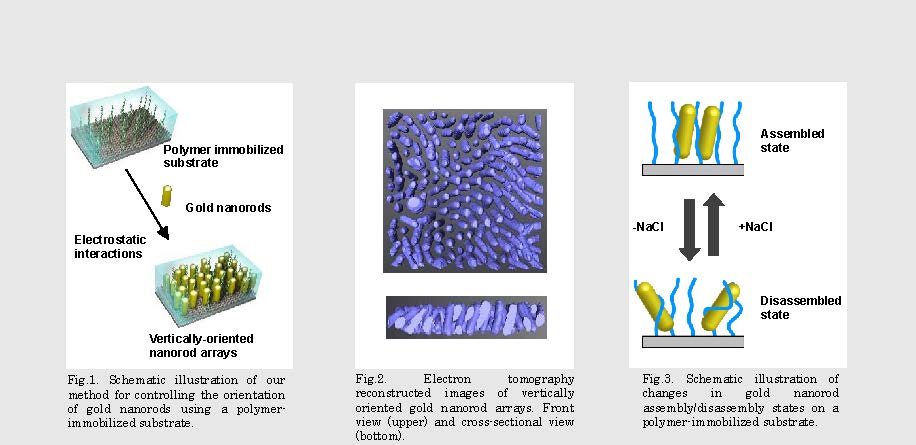RIES
Research Institute for Electronic Science, Hokkaido University
北海道大学
電子科学研究所

LAST UPDATE 2023/08/10
-
研究者氏名
Researcher Name中村聡 Satoshi NAKAMURA
特任助教 Specially Appointed Assistant Professor -
所属
Professional Affiliation北海道大学電子科学研究所
生命科学研究部門 生体分子デバイス研究分野
Research Institute for Electronic Science, Hokkaido University
Section of Biology and Life Sciences, Laboratory of Molecular Devices -
研究キーワード
Research Keywords高分子
コロイド粒子
センシング
Polymer
Colloidal particle
Sensing
- 研究テーマ
Research Subject -
コロイドナノ粒子の動的制御によるセンシングシステムの開発
Development of sensing system based on the dynamic control of colloidal nanoparticles
研究の背景 Background
棒状の金属ナノ粒子(例:金ナノロッド)は、魅力的な特性や機能を有しており、化学・生物学的なセンシングやドラッグデリバリーなど、様々な用途に応用されている。しかし、その特性を生かすには、その配向や集合体形成ならびに解離挙動の動的制御が重要であることが知られている。
Rod-shaped metal nanoparticles (e.g., gold nanorods) have an array of attractive properties and functions, which have a variety of applications chemical and biological sensing, and drug delivery. It is well known that to harness their properties and functions, the dynamic control of their orientation as well as assembly/disassembly behavior is of important.
研究の目標 Outcome
私たちは最近、高分子固定化基板上で金ナノロッドを配向制御する方法を開発しました。さらに、高分子固定化基板上で、その集合・分解挙動を動的に制御することに成功しました。現在、本技術に基づく新しい化学・生物センシングデバイスの開発を目指しています。
We have recently developed a method for the orientation-control of gold nanorods on a polymer immobilized substrate. Further, we have successfully demonstrated the dynamic control of their assembly/disassembly behavior on the polymer immobilized substrate. Currently, we aim to develop novel chemical and biological sensing devices, based on the technology.
研究図Research Figure

Fig.2. Electron tomography reconstructed images of vertically oriented gold nanorod arrays. Front view (upper) and cross-sectional view (bottom).
Fig.3. Schematic illustration of changes in gold nanorod assembly/disassembly states on a polymer-immobilized substrate.
文献 / Publications
a) ACS Omega 2017, 2, 2208–2212; b) Langmuir 2020, 36, 3590–3599; c) Chem. Lett. 2020, 49, 749–752.
研究者HP
- S.Nakamura
 es.hokudai.ac.jp
es.hokudai.ac.jp - https://chem.es.hokudai.ac.jp/